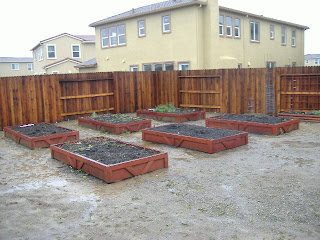
The first step in the gardening process is now arriving in bunches in the mailbox of Bill and Venus Bird. Yep -- I'm talking seeds, seeds and more seeds. And lots of them too. This batch pictured to your left came from Pine Tree Seeds, but we're also getting deliveries from other places around the country.
I like Pine Tree seeds. I've ordered from them before and they have a couple of things going for them. One, the seed packages are CHEAP (always a good sign), and secondly, I've found that they are very productive. Some of the best vegetables grown in the backyard last summer came via Pine Tree seeds, including the Sweet Diane Watermelon that I wrote about in this blog just last summer.
That was one delicious melon. I can only dream about that taste now, but I'll never forget it. There's nothing quite like pulling a vine-ripened melon -- any melon -- from the backyard. You haven't tasted sweet, until you've grown it by seed in your very own backyard.
The arrival of the seed orders doesn't mean "ready, set, PLANT!" I sure wish that were the case, but we're still a couple of months off. What it does allow Venus and I to do is lay out the garden. Since we rotate crops to ward off harmful bugs, we know the tomatoes will be in a different bed next spring, as will the bush beans, corn, lettuce, radishes, green onions, etc. Once the seeds packets are in hand, we can divide them between the six main beds and the 10-15 smaller planter beds.
Of course, it should come as no big surprise that my personal favorite are the tomato seeds. They're arriving in big numbers now. Some of the seeds, like Delicious for example, were gifts from other growers. Still others were ordered from TomatoFest, Pine Tree Seeds, Seeds of Change, Totally Tomatoes -- you name it. Some varieties are new to the garden. Some are old favorites.
For instance, I had to re-order a particular variety of seed from Seeds of Change. And I'm very hopeful that this package of Costaluto Genovese seed will produce a bumper crop of Genovese tomatoes, which was an absolute favorite out of the garden in 2007. Not only was it a favorite, it was the "outstanding producer" in our garden that year. The wife and I froze 15-20 bags of Genovese tomatoes and used them through the 2007-2008 winter on a variety of dishes.
Unfortunately, last year, I made a serious mistake. When volunteer Genovese plants began popping up in the garden beds last spring, I mistakingly believed I would not have to start from seed again. After all, why plant a seed when you've got a perfectly good starter plant that popped up out of nowhere, right?
Wrong. Bad idea. The tomatoes that came off those starter plants last summer were nothing like the tomatoes that came off the Genovese plant vine in 2007. The plant may have looked the same, or similar, but the production was not good and that fabulous Genovese taste just wasn't there.
In short, it was a major disappointment in the Bird garden last year. But, thanks to the new seed, that won't happen this year (I hope!).
And yes, there are some varieties I simply cannot do without. Campbell's 1327, for example, will have a home in the garden this summer. So will Kellogg's Breakfast. You can't count out Marianna's Peace, and never give up on the Brandywine. There are a few others that will also make a return trip.
And then there are still others to try. I've heard a lot about the variety called Cosmonaut Volkov, which is named after Vladislav Nikolayevich Volkov, who was a Soviet cosmonaut who flew on the Soyuz 7 and Soyuz 11 missions (he unfortunately died during the Soyuz 11 mission).
Another interesting addition to the garden this year is Dr. Wyche's Yellow, which was was developed by the late Dr. John Wyche who owned the Cole Brothers Circus. Rumor has it that the good Dr. Wyche, as a Circus owner, had access to lots of different "fertilizers."
And that's the really interesting thing about growing heirloom tomatoes and other heirloom vegetables. You're not just growing a tomato. You're not just growing a watermelon, or a radish, or ordinary cauliflower.
You're growing a piece of history. It's got a name behind it. There's a reason why it survived all these years. Sometimes the story is just as good as the crop.
Seeds are in -- time to start planning!
A followup to this posting -- as I forgot to mention a very important seed source that has served us well in the past. How could I?
Don't roll your eyes or put your nose up at seedracks located in Dollar Stores or other bargain stores in your town. Those can be a great deal in some cases. Some of the best basil I have ever grown came right out of the Dollar Tree store located near Elkhorn and Watt in North Highlands.
We already had more than enough seed for the garden as I remember, but were immediately drawn to the rack that offered a deal too good to pass up: TEN PACKS OF SEED FOR $1!
Who can pass up a deal like that? We couldn't. We didn't. And those ten packets of spinach, basil, carrots, radishes and green onions kept producing all summer long.
It just goes to show that good gardening bargains can be found just about anywhere you look.
















